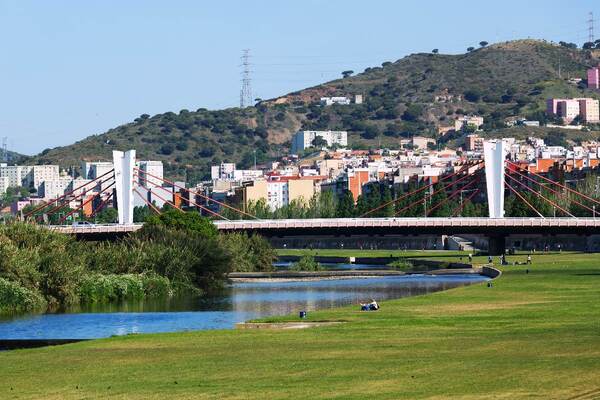It’s 1 am in a still, muggy night in Delhi. In a corner of the city, at the Aerocity area near the international airport, Khubani in Andaz Delhi hotel is brimming with people decked in their swankiest attires. Men and women sway to the soft, soulful music wafting through the place, with some looking in from the balcony of what you might describe as a ballroom. Each patron seems to be in thrall of the song being sung by a Sufi singer. While the crowd is mesmerised by the melody, people in uniform are busy weaving through those swaying to the music, serving drinks and snacks among the patrons. Even the bar is bustling with orders.
The stream of people coming in to enjoy every Wednesday evening’s Sufi rendition doesn’t stop till late into the night. “We enjoy coming to the outlet, which is safe and where we can enjoy at night. Sometimes, we want to stay beyond 1 am but the bar staff starts pushing us to leave, and that irks us,” says a couple who frequents Khubani and other similar outlets.
Khubani is one of the few nightclubs in Delhi that remain open late into the night. “You can count outlets like Khubani on your fingertips in Delhi. Being the national capital, Delhi is still very far from becoming a night-time economy,” says Sharad Madan, Co-founder of Imperfecto and Khubani. Madan owns 12 such establishments in Delhi and Gurugram, and says that there are hardly any people out having a good time in Delhi after 1 am. However, when you travel across the world, the party begins at night.
AN HOUR’S WORK: Just an hour’s extension for Gurugram’s hospitality industry has led to a steep rise in revenue and created more
But the case for a night-time economy is not only to cater to the demand of revellers. The former Night Mayor of Amsterdam, Mirik Milan, once said: “Late night culture is a massive motor for a city’s economic well-being.” Meanwhile, the night-time culture in India is a little different. As people in the megacities of the country seek the warmth of their beds, even the parts of the economy that can function at night, and add substantial value to the overall economy, go into a slumber. But there are some pockets in the country where a night-time economy is an evolving phenomenon.
The latest stride in this direction has been taken by Haryana. To compete with New Delhi’s new liquor policy that looks to upgrade the city’s liquor vends and intensify competition among private players (the policy was recently rolled back), Haryana has given bars and restaurants an option to operate 24×7 across cities in the state. According to its new liquor policy, there will be no cap on timings for outlets that pay an additional liquor licence fee of `20 lakh per annum. However, pubs and restaurants that would like to close their establishments at 2 am instead of 1 am can operate on older licences, and pay the usual annual liquor licence fee of `18 lakh. The new policy allows for pubs and restaurants to start serving liquor from 8 am, while the old policy that was modified in April this year extended the closing time for pubs and restaurants from 1 am to 2 am.
Vikrant Batra, owner of the Cafe Delhi Heights chain—that has not opted for the new 24×7 regime introduced by the Haryana government—says that extending the closing time of cafes and bars from 1 am to 2 am has resulted in a revenue hike of over 25 per cent for them. “Just an extension of one hour has resulted in a steep revenue rise, and an increase in job creation by 15 per cent. Imagine if we are allowed to be open through the night [without the need for an additional licence], what kind of boost it will give to our revenue, and subsequently to our nation’s economy as well,” he adds.
But the liquor policies of state governments are a sideshow to the potential growth that a full-fledged night-time policy can bring to the country. For instance, an industry veteran who wishes to remain anonymous says that if the hospitality industry is allowed to operate through the night, tax revenues can go up substantially, and job creation, too, will get a boost of at least 15-20 per cent.
Globally, too, it’s not only cafes, bars and nightclubs that make up the night-time economy. In cities with an active nightlife, apart from going to pubs and restaurants, a wide array of activities exist to complement the hospitality sector. The impact of these are felt in increased revenues and employment generation. For context, according to a report released by the London mayor’s office, around 1.6 million people—constituting a third of everyone working in the city—worked at night in 2017. Of these, 191,000 worked in health, 178,000 in professional services, while the hospitality sector employed 168,000. These were closely followed by transport, automotive, information technology and education sectors. Meanwhile, the UK’s total night-time economic output was pegged at £112 billion, around 5.1 per cent of the country’s GDP before the pandemic started, according to a study conducted by the UK’s Night Time Industries Association.
Similarly, in New York City, in 2016 (the year for which standardised data sets are available), the night-time economy supported nearly 299,000 jobs with $13.1 billion in employee compensation, and $35.1 billion in economic output. The pubs and restaurants sector’s economic output was measured at $2 billion from night-time sales, with tax revenue for the city coming in at $697 million. Plus, the pubs and restaurants sector generated around 13,400 jobs and $492 million in wages at night for the year, according to a report commissioned by the New York Mayor’s Office of Media and Entertainment. Australia is no different. With a vibrant night-time economy in place, the nation witnessed a total turnover of $128 billion in sales in 2019-20, although this was a decline of $12 billion from the previous year, according to a report commissioned by The Council of Capital City Lord Mayors. Sydney, which has Australia’s most vibrant nightlife, generates more than $3.64 billion in night-time revenue each year, with around 4,600 businesses employing more than 32,000 people, according to the city’s administration.
In that context, the Indian economy, too, stands to gain if a structured night-time economy is established in the country’s cities. “If a night-time policy is implemented along with concessions for the shopping sector, then we can expect around 20-25 per cent increase in job opportunities across maintenance, security, and managerial roles. We can expect around 20-25 per cent more revenue to be generated if malls are allowed to open throughout,” says Jayen Naik, Chief Operations Officer of Nexus Malls.
While most metropolitan cities in India have some regulations allowing the operation of workplaces at night in industries such as IT & ITeS, a more holistic approach to policymaking is required to establish a thriving night-time economy in the cities. The benefit of such a change will not only be reflected in more places for the city’s residents to visit during the night, but also allow Indian cities to compete as tourist hotspots with global peers that are considered the doyens of city nightlife. According to Batra of Cafe Delhi Heights, since Delhi does not have an established night-time ecosystem, it has become a transit city for many international tourists in India. “Goa’s nightlife is the big attraction, and that is why international tourists coming to India go to Goa. Sometimes foreigners, or my relatives come to India, and then we feel embarrassed thinking about where to take them,” he says.
Around the world, the most sought after tourist destinations have one thing in common: a thriving night-time economy. Barcelona, Madrid, San Francisco, London, Berlin, Sydney and New York are just some examples of a vibrant night-time economy, and that is why these cities get the sobriquet of ‘the city that never sleeps, or the city of owls’. “In Spain’s Barcelona and Madrid, 6 am in the morning is like 6 pm in the evening in Delhi. Barcelona and Madrid are quintessential examples of thriving night-time economies,” says Khubani’s Madan.
But Indian metropolitan cities are slowly and steadily moving towards the concept of creating a flourishing nighttime economy. Many states are trying to give fresh impetus to economic growth. In this year’s budget of the Delhi government, Finance Minister Manish Sisodia announced the preparation of a policy that would allow food trucks to operate at designated places in the city from 8 pm to 2 am. This step was aimed at strengthening the night economy of Delhi, and create more jobs. Even Delhi’s former Lieutenant Governor Anil Baijal last year said that the Delhi Master Plan 2041—which will be notified later this year—is a continuing and prospective document that aims to make Delhi an internationally acclaimed night-time economy. He had said that a 24×7 city will not happen overnight, and it has to be achieved through an incremental process.
The challenges of creating a night-time economy are enormous. “There are a lot of factors that need to be considered before forming a night-time policy. Basic things can be considered such as concessions on electricity rates, flexibility in labour laws and working hours, and empowering other sectors to work through the night,” says Naik of Nexus Malls.
According to Khubani’s Madan, security and infrastructure play vital roles in the growth of a night-time economy. “In a city like Delhi, we have very patchy infrastructure at night, no metro or public transport, etc. However, in top night-time economies, infrastructure and public transport along with security add hugely to the ecosystem. In India, a lot needs to be done from the perspective of night-time economies,” he says. He adds that one reason for Delhi’s night-time economy being at a nascent stage is because the Delhi Metro operates only till 12 am, and cabs are not readily available throughout the city.
While the challenges of establishing a safe and thriving night-time economy are many, the opportunity it presents is also massive. “If we want the night-time economy to grow, we need to have uniform regulations. This ecosystem has the potential to add to growth, but it’s not like it will add a per cent of growth to India’s GDP. However, it can add 5-10 per cent into this industry. It will lead to job creation,” says Madan Sabnavis, Chief Economist of Bank of Baroda.
According to economists, the top 10 cities contribute about $500 billion to India’s $3-trillion gross domestic product (GDP). If we assume that the night-time economy will add even 6 per cent to the urban output, it amounts to $30 billion. That is the quantum of growth the Indian economy is expected to accrue with a flourishing night-time economy.
“I think with security, and a robust infrastructure in the city, it will lead to a manifold jump in our revenues. If we get the government’s support in terms of policy, like businesses are getting in western countries, I am sure, what business we are doing throughout the day, we will do that business in 4-5 hours at night,” says Khubani’s Madan on the potential of the night-time economy in Delhi.
Batra of Cafe Delhi Heights opines that it’s not only food and drinks that make a night-time economy functional. “We should have grocery stores, malls, and a mix of entertainment to create a 360-degree night market. Why can’t I have a haircut at midnight? Why can’t I go to study in a library at midnight? We should have all the options,” he says.
Those options, of course, are a little way away. As they say, the night is young, and full of expectations.
@RajatMishra9518













